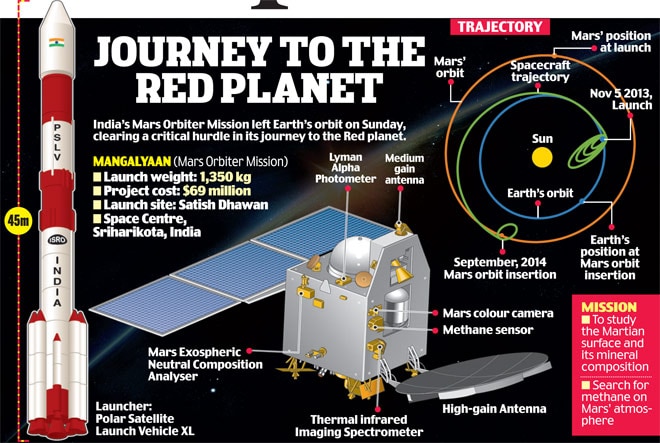Scientists have shown how the Vampire bats that have forged “friendships” with others will rendezvous with these friends while foraging for a meal.
India's Mars Orbiter spacecraft has completed seven years in its orbit, well beyond its designed mission life of six months.

|
Scientific Instruments |
Purpose |
|
Mars Exospheric Neutral Composition Analyzer (MENCA) |
To study neutral gas atoms in the Martian atmosphere |
|
Lyman Alpha Photometer (LAP) |
To quantify hydrogen & deuterium |
|
Thermal Infrared Imaging spectrometer (TIS) |
To study mineral resources of Mars |
|
Methane Sensor for Mars (MSM) |
To search for methane |
|
Mars Color Camera (MCC) |
To capture the images of the Martian Surface |
Judima has become the first beverage from the north-eastern region to earn the geographical indication (GI) tag.
Ministry of Defence has placed an order to Heavy Vehicles Factory (HVF), Chennai for 118 units of the Main Battle Tank Arjun’s Mark-1A variant for the Army.
A team of researchers have made the first putative direct detection of dark energy using the XENON1T experiment (to detect dark matter).
|
Dark Matter |
Dark Energy |
|
Dark matter is a hypothetical form of matter thought to account for approximately 85% of the matter in the universe. |
Dark energy is an unknown form of energy that is hypothesized to permeate all of space, tending to accelerate the expansion of the universe. |
|
27% of the universe is dark matter |
68% of the universe is dark energy |
|
Dark matter works like an attractive force that holds our universe together. |
Dark energy is a repulsive force that causes the expansion of our universe. |
Source: PIB, The Hindu, The Indian Express, Times of India, Hindustan Times, ISRO, NASA